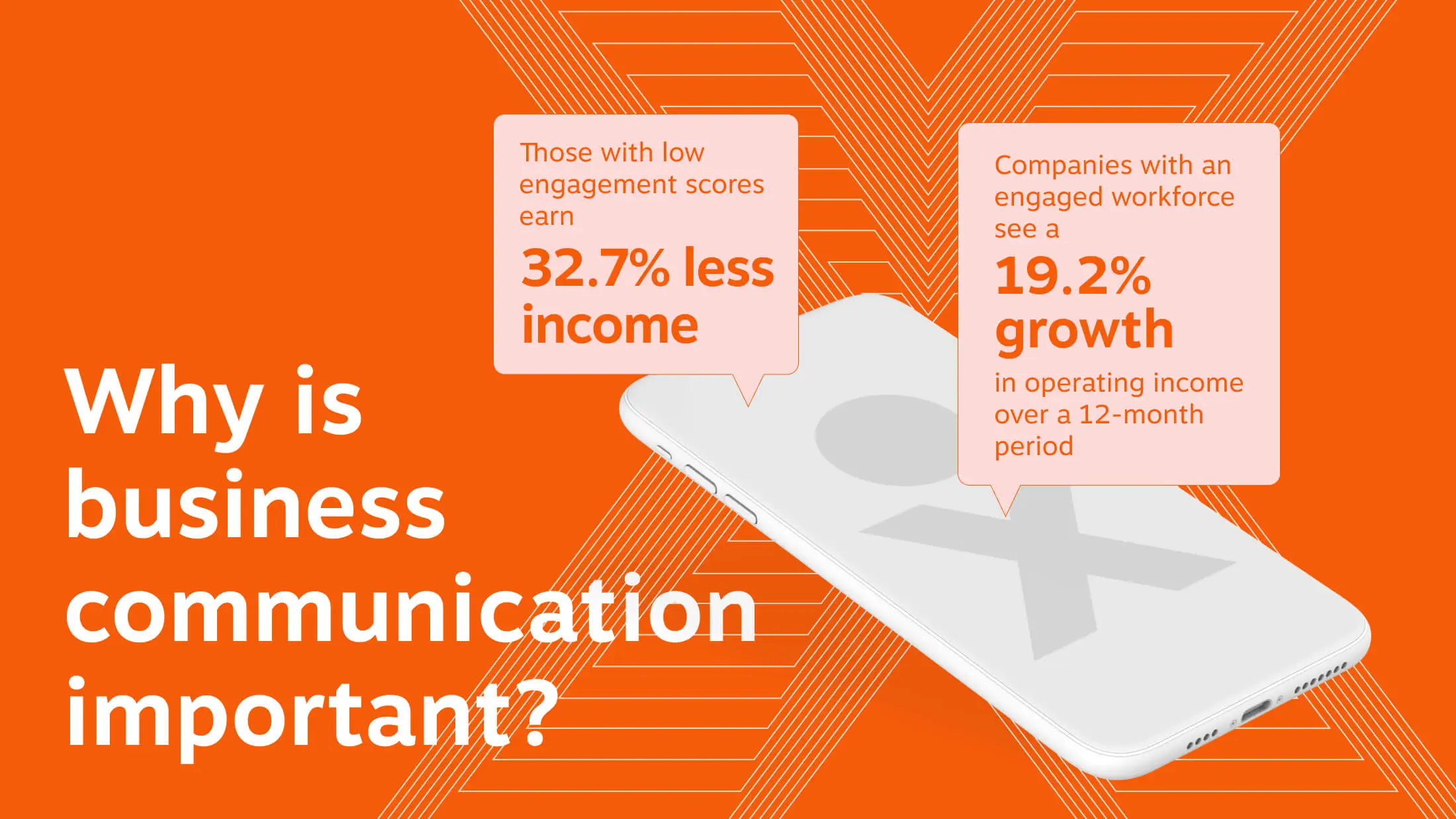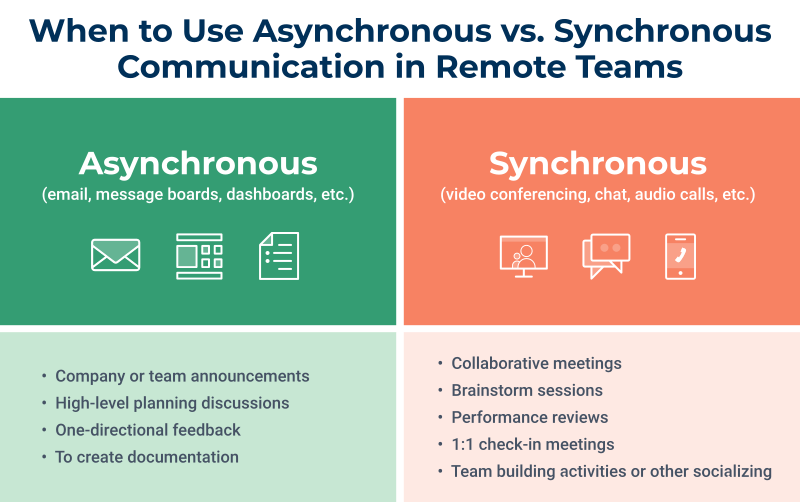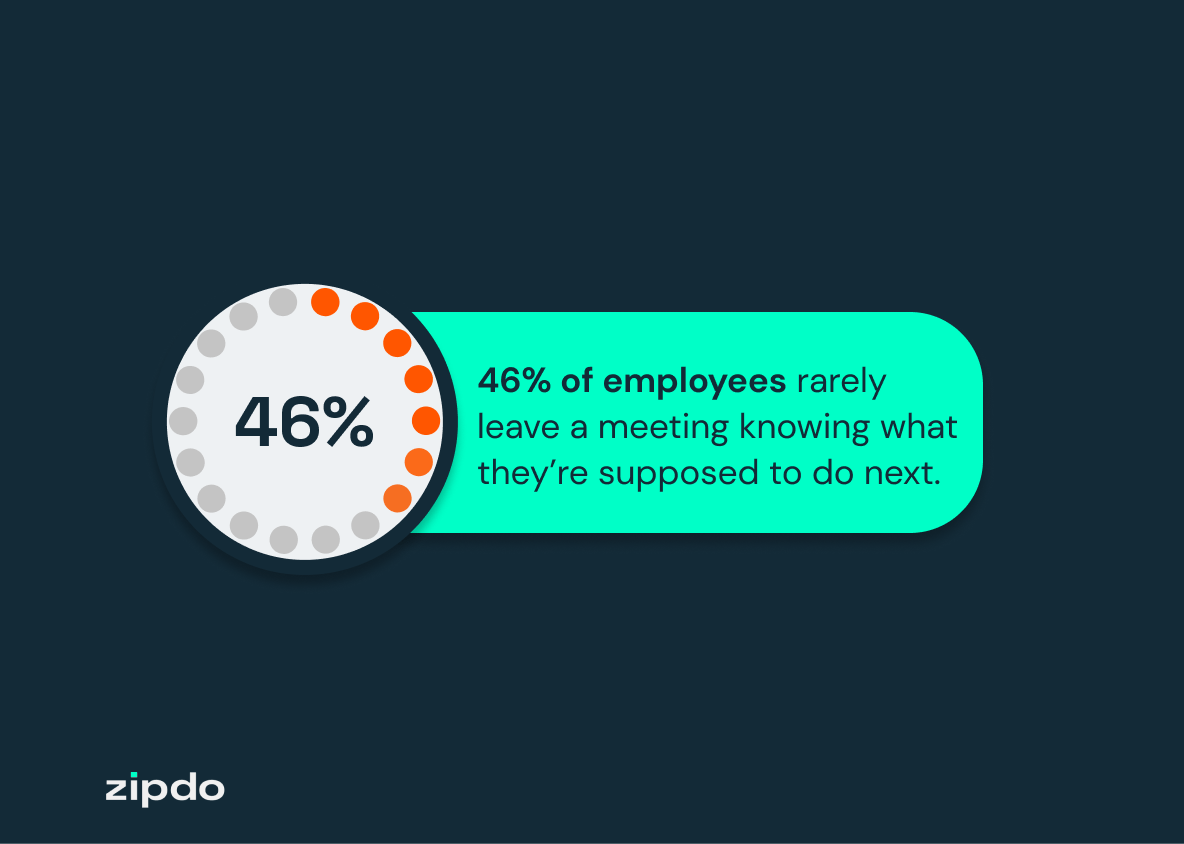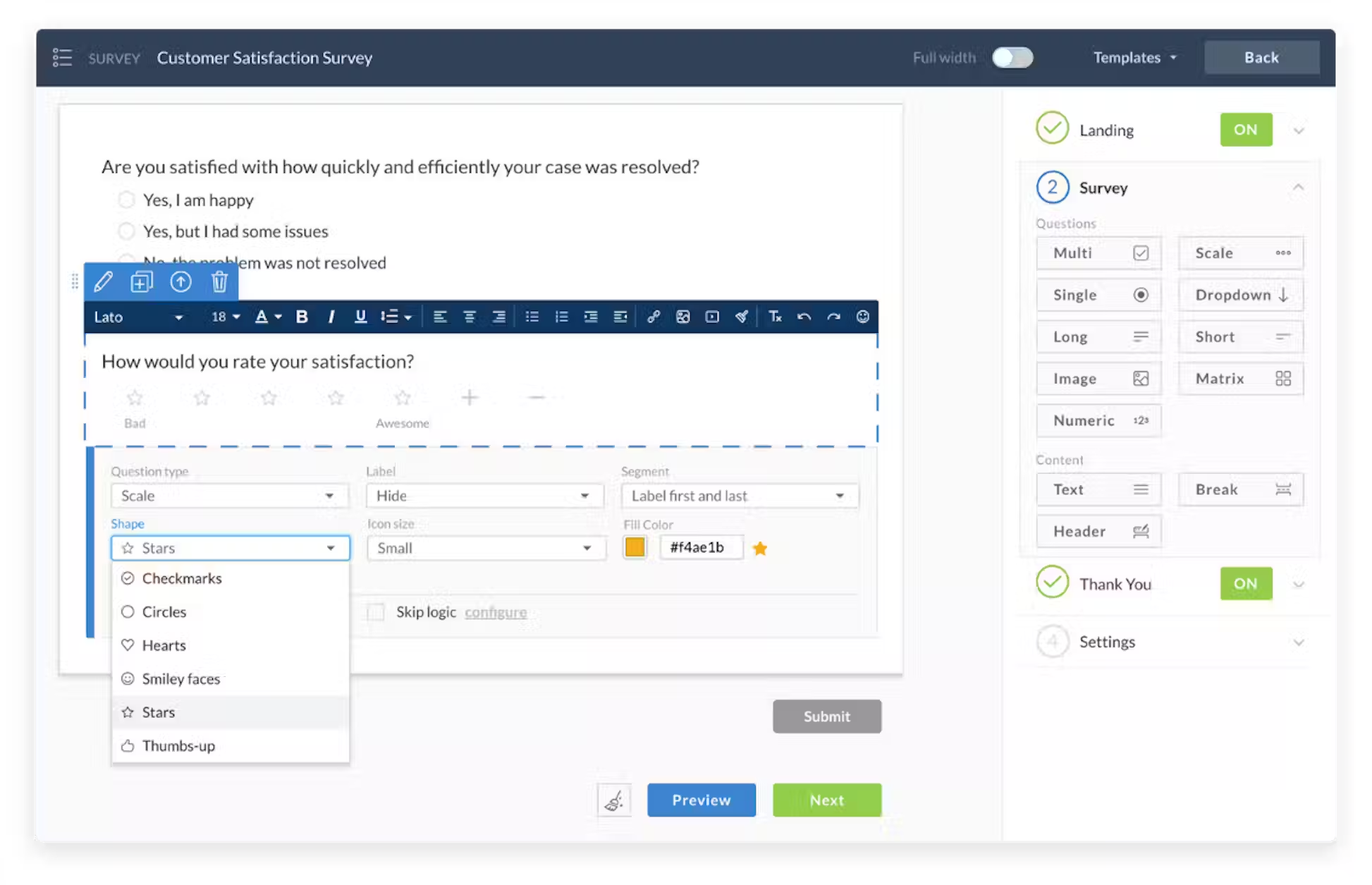The way we communicate with others is so ingrained in our daily lives that we seldom pause to think about its significance. This is especially true when it comes to business communication. After all, organizations aren’t faceless entities — they’re composed of real people working together as a team.
Effective communication influences every aspect of a company, from processes and efficiency to employee morale and customer satisfaction, which significantly enhances decision-making and problem-solving capabilities.
In this guide, we’ll explore everything you need to know to establish a robust business communication process that will benefit your company.
What Is Business Communication?
Business communication is the process of sharing information between people within the workplace and outside a company.
Effective business communication is how employees and management interact to reach organizational goals. Its purpose is to improve organizational practices and reduce errors. It’s important to work on both your communication skills and communication processes to achieve effective business communication.
The importance of business communication also lies in:
- Presenting options/new business ideas
- Making plans and proposals (business writing)
- Executing decisions
- Reaching agreements
- Sending and fulfilling orders
- Successful selling
- Effective meetings
- Providing feedback to employees and customers
All organized activity in a company relies on the process of business communication and your communication strategy. This could be anything from managerial communication to technical communication with vendors.
And once communication becomes unclear, the company’s core systems risk falling apart. Data shows that 60% of internal communications professionals do not measure internal communications. Potential reasons include not knowing where to start, the next steps, or how to calculate ROI.
Why is business communication important?
Voice solutions like VoIP (Nextiva or other alternatives) will likely result in higher employee engagement. And companies with connected employees in the workplace have seen a spike in productivity of up to 25%.
Companies with an engaged workforce see a 19.2% growth in operating income over a 12-month period. Those with low engagement scores earn 32.7% less.

How much more successful would you be if you had better employee engagement? And how can you create a business communication process that will make it possible?
What Are the Four Types of Business Communication?
Let’s first differentiate the four main types of communication in a typical organization:
- Internal Upward Communication: This flows from lower levels of a hierarchy to the upper levels. Examples include performance reports, giving feedback to superiors about different aspects, and allowing employees to communicate their experiences and suggest improvements. It plays a crucial role in enhancing job performance.
- Internal Downward Communication: This typically involves getting and receiving instructions and assignments from higher to lower levels within the organization, such as directives, memos, and policy announcements. Effective delegation and clarity in this communication help prevent misunderstandings and operational errors.
- Internal Lateral Communication: Communication that takes place between and among staff members at the same level, facilitating coordination and collaboration. This includes meetings, emails, and team briefings. Effective communication in this area ensures that tasks are understood and executed correctly.
- External Communication: This encompasses all communication that occurs between the organization and external parties, such as customers, vendors, and the public. This includes marketing materials, press releases, and customer service communications. It impacts brand reputation and is essential for maintaining positive relationships outside the company.
Business Communication vs. Business Communication Services
Business communication typically refers to the act of communicating in your business. On the other hand, business communication services refer to the types of software solutions you could use to help facilitate communication and collaboration across your business.
Business communication services include:
- Voice solutions like VoIP
- Software that allows you to conduct video meetings
- Email services
- Contact center software that manages communication with your customers
- Small business VoIP that let you take calls and communicate from anywhere
Which Business Communication Services Does My Business Need?
The answer largely depends on the size and preferences of your business. There’s no one-size-fits-all solution. But one thing is for sure: You will set yourself up for success by only using the business communication services you actually need.
For example: You want a forum board, so you and your staff spend weeks finding the best solution and setting it up. After a while, you learn that no one is using it because they get their answers faster from their team or documents. An unnecessary solution has cost you valuable time and money.
Or you install a quality video conferencing system, when in reality you only need a reliable business phone system to run your remote meetings. Every business will use web-based communication.
All the other methods, however, will depend on individual company circumstances. Take the time to mindfully consider the value of each for your unique situation.
Problems That Effective Business Communication Can Solve
Clear and effective business communication is critical for teams, employees, managers, and executives to perform their jobs and fulfill their responsibilities.
Without the right processes and tools in place, the flow of information is interrupted and people are left in the dark. This can lead to serious consequences for the company, from unsatisfied employees and customers to lost profits.
The transparent flow of information is an obvious overarching goal of a business communication process.
Here are some deeper problems that successful business communication solves.
1. Email overload and lack of everyday productivity and clarity
In many workplaces, people are simply overwhelmed by the number of messages they receive in a single day. In his book Message Not Received, Phil Simon said the average person receives 120-150 emails per day.
Because of this, we can easily misplace or completely overlook a crucial piece of information in our inboxes. But with a business communication system in place, companies can reduce digital distractions and create space for ideas and thinking.
2. Horizontal and vertical communication silos
Teams and departments don’t always exchange essential information. Sometimes there’s no direct way of reaching out to a department manager when there’s an issue inside a team. These silos form easily and often without anyone noticing but can easily be remedied with a business communication plan in place.
3. Poor communication with remote employees
Remote work is here to stay. The State of Remote Work report from Buffer shows that 98% of employees would like to work remotely for at least some of the time:

Among the struggles when it comes to working remotely are collaboration and communication, which indicates the value of the right communication systems in place.
4. Employee turnover/low employee engagement
When the best workers from your organization leave, it puts your ability to serve customers at risk. It’s also expensive. Losing an employee can cost the business:
- One to two times an employee’s yearly salary
- $1,500 for an hourly worker
- 100% to 150% of an employee’s annual salary for technical positions
- Up to 213% of an employee’s annual salary for C-suite positions
But when companies communicate effectively, they are 50% more likely to report turnover levels below the industry average.
5. Poor customer service
If there’s poor communication in an organization, two things happen when it comes to customer service:
- First, employees in customer-facing roles won’t have the information they need.
- Second, customers will sense low employee morale and have a negative experience.
In fact, one study found that employee attitude improvement impacts customer satisfaction, which then results in an increase in revenue.
The importance of non-verbal communication in business
Non-verbal communication covers so much ground – from your facial expressions to your tone in an email. Considering that the vast majority of external business communication happens asynchronously (meaning anything other than a 1-1, face-to-face meeting) via email, project management task boards, or chats…almost all of our business communication can be considered non-verbal.
Therefore, it’s incredibly important to work on both verbal (face-to-face conversations, telephone calls) and non-verbal (facial expressions, body language, written) communication.

Top tip? Read something out loud before you hit “send.” This is a good gut check to hear how your message is coming across.
5 Steps to Set Up Your Business Communication Process
A solid business communication process is essential for the happiness of your employees and customers. Ultimately, this leads to financial stability.
About 29% of employees say their current internal business communication tools do not work effectively. Some of the reasons include lack of transparency, organizational silos, information overload, or the absence of an appropriate communication channel.
And according to Apollo Technical, 86% of employees and executives consider inefficient communication to be the reason behind workplace failures.
It’s clear that we can no longer ignore the importance of improving business communications, both internal and external. Here are five steps you can follow to ensure a successful business communication process.
1. Audit your current state of business communication and set goals
No matter what stage your company is in, you need a business communication plan in place. However, to ensure effective communication, you need to focus on the areas that require the biggest improvement right now and work your way to other areas later.
For example, these might be some of the reasons your communication needs revisiting:
- Low employee satisfaction or high turnover
- Lower than expected outputs across the company
- Fast growth, which leads to losing track of information
- Lack of information transparency due to remote work
You might experience more than one of these or a completely different scenario. Identify it and set goals for your business communication process based on it. For example, your goals can include:
- A specific employee turnover or satisfaction rate
- Customer satisfaction rate
- Number of projects completed
- Number of interactions between departments
2. Identify core groups in your organization and their relationships with each other
Look into the structure of your organization and all the groups involved in its ability to function. Take note of every group that requires information to function. This should include:
- Horizontal classification: different departments (operations, marketing, design, human resources, sales, customer support, finance, etc.)
- Vertical classification: professionals in teams, team leaders, department managers, executives
- External groups: customers, suppliers, partners, etc.
From here, evaluate the work they do on an ongoing basis and the results expected of them, and then map out the way they need to communicate in order for their jobs to get done, as well as the appropriate communication tools required.
Depending on your company size, this might be a large task, so give yourself plenty of time. Some of the main questions to ask are:
- Which teams and people have to talk to whom on a daily basis? What about weekly, biweekly, and monthly?
- What communication happens only when there’s an ongoing crisis?
- How are managers and team leaders maintaining progress in their departments? How does reporting work?
- Is there a knowledge library that has the potential to reduce unnecessary meetings and conversations?
- Which projects and processes need approvals from other people in the company? How are approvals requested and facilitated?
At a minimum, the answers to these questions should give you an insight into the necessary amount of emails, messages, calls, meetings, and documents required for everything to happen in the designated time frame.
3. Define methods of communication
Next, choose the best methods of effective business communication that align with your goals, as well as the interactions between core groups in your company. Review the list of communication tools and technologies mentioned earlier and make sure to add any unique ones to your company:
- Web-based communication
- Telephone meetings
- Video conferencing
- Face-to-face meetings
- Reports and official documents
- Presentations
- Forum boards and FAQs
- Surveys
- Customer management activities
Which of these are essential for your organization to reach its goals? What’s optional and might see resistance in adoption? Which ones create the risk of overwhelming employees with too many tools and should be simplified?
Be realistic about your specific needs. For example, a five-person startup where everyone works in the same office will likely focus on:
- Web-based communication
- Face-to-face meetings
- Customer management
And a 50-person company that is fully remote will invest more resources into:
- Phone and video conferencing
- Document organization to be able to diligently track their processes
A large global enterprise will probably use all of the listed methods of communication and have dedicated teams for many of them.
4. Choose the right communication tools
There’s no handbook that defines which tools are absolutely best for each purpose. Gmail versus Outlook. Google Drive versus Dropbox. Slack versus Nextiva Chat. The battles go on, but your choice is entirely up to the preference of you and your workforce.
Here are some tips when it comes to selecting the right tools:
- Use cloud storage to preserve important documents and other data. Enable automatic sync and backup to avoid human error and forgetting to manually save information to it.
- Use a single platform for emails and calendars.
- Use a single tool for chat messaging (if some people use Slack and others use Google Chat, it will create friction and impede communication)
- Implement an easy-to-use, reliable VoIP phone system if many of your meetings happen remotely.
- Develop brand and editorial guidelines that detail the tone of voice and use of brand elements. This way, all communication is unified, internally and externally.
5. Document the process
Finally, take note of everything you do throughout this setup and turn in into a shared document that’s accessible to the entire organization. This way, each employee can refer to an intentionally developed communication plan and decide on the best action for the situation they’re in.
The document will also help newly on-boarded employees easily grasp all the tools and best communication practices.
You can create a recurring calendar reminder for yourself and your team to revisit the document once a quarter. This way, you can make sure the plan is still serving its best purpose and update it if necessary.
Business Communication Channels
Business communication takes place in many forms – verbal or written, in-person or remotely – but it is critical to the happiness and, thus, productivity of your employees in the workplace.
There is no one perfect channel for any particular company; it entirely depends on the context.
Written communication is great for keeping a paper trail of decisions and actions made as well as for putting strategies and plans in place. Verbal interactions enable instantaneous idea generation and a more open flow of thoughts.
Let’s take a look at the best methods of business communication applicable to some or all of the above scenarios.

1. Web-based communication
This includes everyday communication channels like email and instant messaging applications (such as Slack, Hangouts, or even Nextiva Chat). The benefits of email and messaging lie in the ability to have private conversations in a busy office environment, as well as sharing a message with many people all at once.
2. Telephone meetings
Phone conversations remove the location barrier to running productive, fast-moving meetings. It allows for better idea exchange thanks to the non-verbal communication (tone of voice) compared to written communication. Cloud phone systems can accelerate onboarding and overall team collaboration.

3. Video conferencing
Great video conferencing systems enable people at remote locations to run meetings that feel as close to in-person meetings as possible. They take phone meetings one step up.
4. Face-to-face meetings
In-person meetings can help a business move forward with ideas quickly. Research shows that face-to-face meetings generate 15-20% more ideas than virtual meetings.
However, having a rock-solid meeting agenda is essential for effective meetings because 46% of employees rarely leave a meeting knowing what they’re supposed to do next:

5. Reports and official documents
Documenting activities that impact other people and departments is a crucial part of a well-oiled business communication system. The ability to refer to a written document at any moment reduces the chance for confusion or disagreement and provides extra clarity in communication.
6. Presentations
Presentations supported by reports and PowerPoint slide decks are often how meetings with larger groups are conducted. These are great for sharing new ideas in a visual way that creates space for questions and any clarifications.
7. Forum boards and FAQs
Having an internal area for employees to refer to frequently asked questions on various departmental topics and ask new ones will make them more productive and up-to-date on any matters they deal with regularly.
8. Surveys
Both internal and customer surveys are ideal ways to gather feedback and ratings on important topics. Surveys facilitate a healthy cycle of feedback-supported improvements and open a communication channel between all levels inside an organization.

9. Customer management activities
This can include any customer relations activity, such as live chat support, customer relationship management (CRM) systems, customer onboarding processes, and customer reviews.
Your Company Success Starts With Communication
Poor communication in business carries too many risks to be overlooked.
Great communication, however, brings an opportunity for outstanding employee and customer engagement. It creates clarity, more significant outputs, and growth in revenue and profit.
Whether you have a business communication system in place or are yet to establish one, remember to:
- Set and revisit your communication goals as a company based on the current state of communication in your company.
- Identify everyone involved in the processes that your company uses regularly.
- Analyze employees’ needs to communicate with each other and identify the best communication tools that make the information flow as efficient as possible.
- Look for the most appropriate tools and platforms that will enable the communication methods you identified as key to your company.
- Share this setup transparently with the whole organization.
As a result, you’ll see happy, productive people excited to work on projects and create meaningful results for the benefit of everyone involved.
Ready to Improve Your Business Communication?
Nextiva’s business communications platform organizes your team’s communication by bringing it all into a single platform. No more shuffling around to find what you need, no more frustration flipping between screens. It’s all here in a single platform. This tool makes your work life more efficient and helps bring all your business communication into one simple view.
Talk to an expert today to see how we can help simplify your business communication.
Business Communication FAQs
Business communication refers to the sharing of information between people within and outside of an organization to promote an effective and efficient business environment. It involves the constant flow of information and encompasses a variety of modes of communication, including verbal, written, and non-verbal.
The seven Cs of business communication are:
Clarity: Being clear about the message you want to convey.
Conciseness: Using fewer words without sacrificing the quality of the information.
Consideration: Understanding the audience’s perspectives and tailoring the message accordingly.
Concreteness: Being specific, definitive, and vivid rather than vague and general.
Correctness: The information should be factually and grammatically accurate.
Courtesy: Being polite, respectful, and considerate in communication.
Completeness: Providing all necessary information for the recipient to make informed decisions.
Business communication skills include:
Verbal Communication: The ability to convey information to others effectively and efficiently.
Written Communication: Skills for writing clear, concise, and actionable messages.
Non-verbal Communication: Using body language, facial expressions, and gestures to convey messages without words.
Listening: The ability to accurately receive and interpret messages in the communication process.
Presentation Skills: Effectively presenting information to a group.
Negotiation: Reaching agreements that benefit all parties through effective dialogue.
Conflict Resolution: Addressing disagreements and finding solutions diplomatically.
The importance of communication for business ensures that information is accurately conveyed between stakeholders, facilitates operations, and aids in decision-making processes. Effective communication improves efficiency, builds stronger relationships, and supports problem-solving, innovation, and growth within the company.






